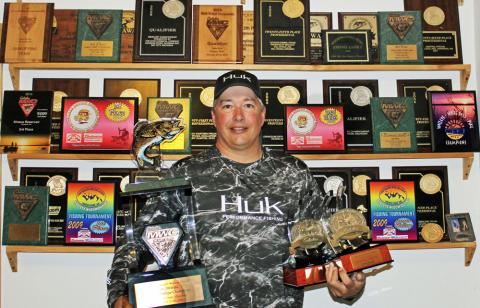Matt Drury

We believe at DODTV that I speak to the 18 to 40-year-olds who come to social media. In that niche, we’re trying to speak to potential fathers or fathers with young children who want to start taking them outdoors and teaching them to hunt. I fit that niche myself.
Hunting is not what I’m the very best at in the world, but I enjoy living that lifestyle. I like being in the editing studio and in the office, and I sit in front of a computer almost every day. I'm more of a weekend warrior. I try to get out and go hunting as often as I can, but I also have the responsibility to work and care for my family. I have young children who are growing up, and I want them to have the opportunity to learn to love the outdoors as much as I do.
I work five to six days a week, but I still try to find time to hunt and take my children hunting. Passing on a hunting tradition to my children is very important. As my time becomes more limited, I want to make sure that I still make time to give my son and daughter an opportunity to learn what hunting is all about, and to participate in hunting if and when they want to do it.
I live in the suburbs, like many young fathers do. I hunt mostly on leased ground that’s just outside of St. Louis, Missouri. I have a small piece of property, and I deal with the landowner, neighboring property owners, poachers and all the problems that suburban hunters have. Although I've leased 380 acres, only about 100 of those acres are huntable. It’s located in an agricultural area, and most of the land is tillable. I represent the changing face of today’s deer hunter. More and more hunters are leasing smaller properties for themselves, their families and friends for hunting.
A friend of mine was hunting this property before I leased it. He lived out of state and couldn’t hunt the property very often. Because I have young children, I very rarely can leave my work for a 4-day hunt. I knew I had to be very strategic in making and planning time to hunt. This lease is only an hour away from my office. Even if I hunt on the weekends, I still can be home at night. That being said, like many other young hunters, I don’t have a tractor or implements to put in green fields. So, I’ve had to get creative in how to improve the property that I’ve leased to make it better for wildlife. I think the average hunter is much like me. He doesn’t have all the farming implements and agricultural skills to plant on the property that he's leasing to increase the wildlife population there.
I’ve solved this problem in a couple of different ways. I beg, borrow or steal my family’s or friends’ ATVs to put in a green field, and I plant Mossy Oak BioLogic food for wildlife. I've also been working with a local company that will put in food plots for hunters. They come in with a big tractor, and in one day, they can till up the ground, so it’s suitable for planting the crop or crops I want to plant each season for wildlife. For a couple hundred bucks, I can get this company to build me several food plots. By saving my money throughout the year, I can afford to plant green fields for wildlife and for hunting. Also, since soybeans and corn are the main crops for the farmer that I lease the land from, I try and buy a half-acre of the crops he plants and have him leave them standing for the deer to eat through the season.
In my green fields, I like to plant Mossy Oak BioLogic Non-Typical Clover, Last Bite, and Winter Bulbs and Sugar Beets to make sure that I have food in my green fields throughout the entire year. One of the easiest crops for me to plant is Non-Typical Clover, because that crop takes care of itself all year long. The only thing I may have to do is to keep the weeds out of the clover and mow it. In February, I may cross seed that non-typical clover to make sure it comes back strong the next year.



























